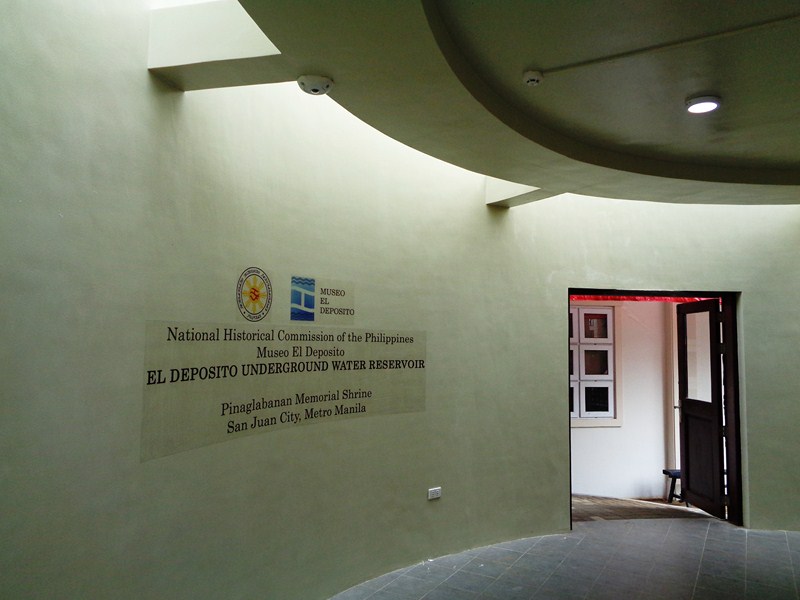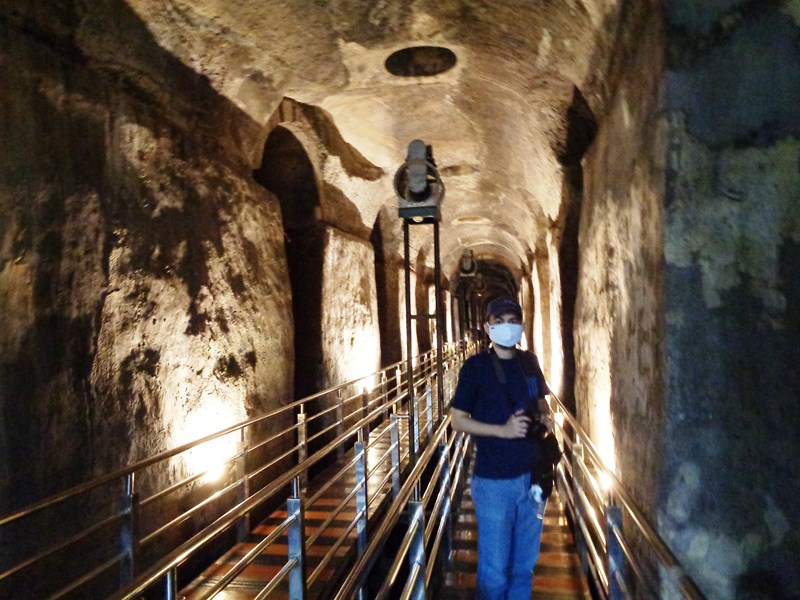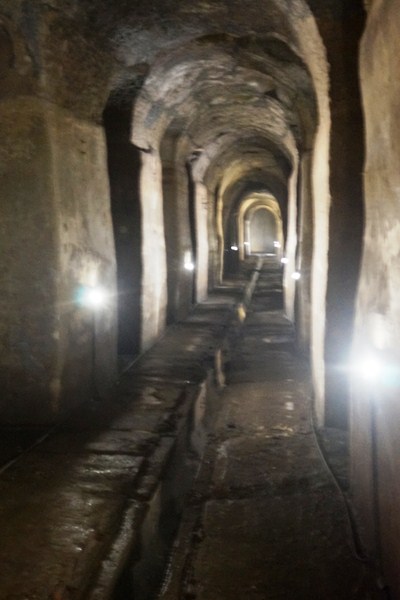The cavernous El Deposito, one of the oldest underground reservoirs in the world and the country’s largest Spanish era artifact, was built as part of the Carriedo Waterworks (named after Francisco Carriedo y Perejo, a Spanish Capitán General who bequeathed a grant to the city of Manila in 1733) which was built from 1878 to 1882 (additional works were done until 1884) under the supervision of Spanish engineer and architect Genaro Palacios (who later designed the all-steel San Sebastian Church). He decided to use the Marikina River as the El Deposito‘s water source.
Made of volcanic tuff, this old underground water reservoir, with had a capacity of 15 million gallons, provided the residents of Manila and its surrounding areas with an adequate water supply. The underground reservoir held military strategic importance and, during the Philippine Revolution, the Katipunan attempted to seize the reservoir from Spanish colonial authorities in the Battle of San Juan del Monte (or Pinaglabanan) on August 26, 1896. During the Philippine-American War, it was held by Filipinos.
During the American colonial administration, it was used as an armory by the Americans and, during the Japanese occupation of the Philippines in World War II, by the Imperial Japanese forces. It was also used as a pulmonary hospital (specifically for tuberculosis patients) and as a firing range. In 1945, El Deposito was recaptured by the Allied forces but, after the war and the Philippine independence from the United States, fell to disuse, becoming a temporary garbage dumping ground and home for informal settlers.
On August 30, 1972, in recognition of the old reservoir as a cultural property, a marker was installed by the National Historical Commission of the Philippines. In 1973, in commemoration of the first battle of the Philippine Revolution, the land along El Deposito was converted into a recreational park named the Pinaglabanan Memorial Shrine and Park.
Check out “Pinaglabanan Memorial Shrine”
In 2016, efforts to rehabilitate the underground reservoir began when the University of the Philippines Archaeological Studies program conducted an assessment and excavation of the structure. In 2018, as a preparation for the development of the site as a tourist destination, the National Historical Commission of the Philippines conducted cleaning of the El Deposito‘s tunnel. It was planned to be open to the public on March 2020 but the onset of the Covid 19 pandemic put this plan on hold. It was finally opened on August 30, 2021.
When it was still in use as a water supply storage, the El Deposito had a capacity of 56,000 cu. m. (2,000,000 cu. ft.) for 300,000 people (at that time Manila only had a population of 285, 454) and, to keep water fresh and free from contamination, ventilation shafts were also utilized.
As part of the larger Carriedo waterworks system, the reservoir sourced its water from the Marikina River which was pumped out via 5 kms. (3.1 mi.) of cast iron pipes which passed through the Santolan area. It also supplied water to hydrants, drinking fountains and fountains in Intramuros and suburbs.
The structure of the water reservoir, situated below an elevated hill, consists of a vast central canal that is connected to 25 smaller canals which each measured 5 m.(16 ft.) high and 3 m. (9.8 ft.) wide. Military and civilian artifacts excavated during the restoration of El Deposito are displayed in Museo El Deposito.
Check out “Museo El Deposito”
El Deposito: Pinaglabanan Memorial Shrine, Pinaglabanan Street, San Juan City, Metro Manila, Philippines. Tel: (632) 753-5439. E-mail: museoeldepositogmail.com. Open Tuesdays to Sundays, 8 AM to 4 PM. Admission is free.
How to Get There: Jeepneys, at Camp Crame, have routes that pass by the Pinaglabanan Shrine. RRCG buses that ply the Ortigas Avenue-Sta. Mesa route also pass by the Pinaglabanan Shrine. By car, take the Bonny Serrano Avenue westbound, beside Camp Crame, until you reach Pinaglabanan Shrine. From Ortigas Avenue westbound, turn left at Bonny Serrano Avenue and go straight until you reach Pinanglabanan Shrine on the right.









